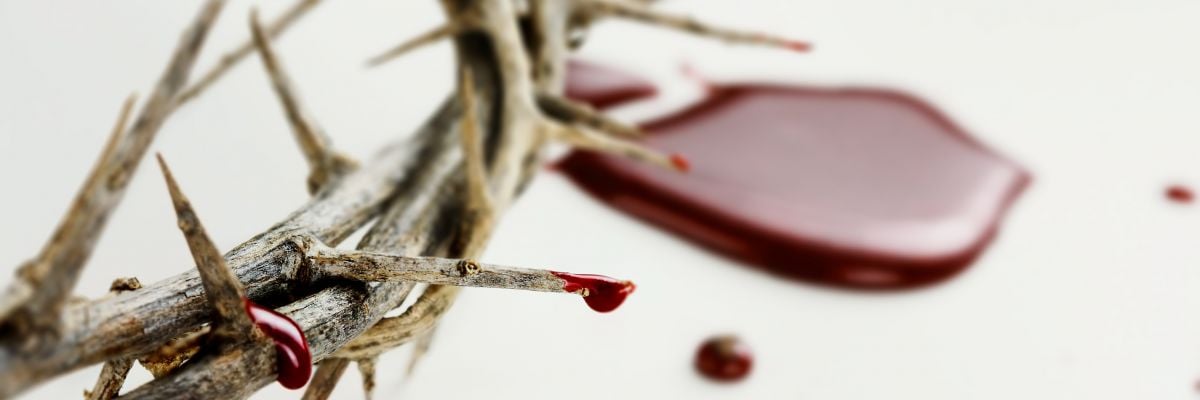
Homily for Good Friday and Holy Saturday, 2020
But one soldier thrust his lance into his side, and immediately blood and water flowed out.
An eyewitness has testified and his testimony is true.—John 19: 34-35
Blessed Angelico, the great Dominican priest and painter, is without par in showing the real meaning of the most precious blood of Jesus, falling on the earth in the agony, shed profusely in the scourging, flowing forth in the crowning with thorns and poured out on the cross.
If you examine his paintings of St. Dominic contemplating Jesus crucified, you will notice something extraordinary: although the Lord is dead on the cross, his blood spurts out as though he were fully alive with a beating heart. This is a truth of our faith especially mysterious and refined. It explains why the onlookers were amazed at the prodigy of blood flowing live from a dead body.
You see, our Savior has two natures in the one divine Person of God the Son. It is a fact that he died; this means that the separation of body and soul—and body from blood—took place in his human death. But at the same time it means that this Person, God the Son, was never separated from his body in the tomb, or his from his soul descending among the dead, or from his precious blood, during the time before his resurrection. Thus his soul and body and blood were all the adorable God the Son, even though humanly he really did die.
When he rose from the dead, then, all these “parts” of him were reunited by his divine power and so he dies no more.
Think of what this meant during the time of his passion and entombment. His precious blood, which was his very self in person, was lying on the streets of Jerusalem, was on the floor of the palace of the high priest and in his prison cell. God, not just blood, but God in blood, was sprinkled, poured out, drained upon the earth.
Yes, the Church in its liturgy worships the blood of Christ—not just as it is now after the resurrection, reunited with his body and his soul, and in the Blessed Sacrament—but also as shed in his passion. The Feast of the Precious Blood, celebrated in the Roman Rite in many places, points this out, as does the official Litany of the Precious Blood promulgated by Pope St John XXIII in 1962. In all this the great pope was following the serene and complete Christology of St. Thomas Aquinas, but most of all the sacred scriptures.
This blood is really and always of infinite value because it is an infinite and eternal Person with God the Son. He never severs himself from the humanity he received from his mother, even if that humanity might for a time be severed from the world in death. This blood is not just a symbol of God’s love and forgiveness; it is in a very real sense God himself, “by whom all things were made.”
United with the rest of Christ’s humanity as it is now, this blood also carries with it his body and his soul as well as his divinity, but simply as his blood it is always united with his Godhead, a divine Person in a single, red, saving stream. What a mystery is this!
And it is a powerful and touching consideration for our love and adoration of the Savior as he identifies himself utterly with his Precious Blood, the very life and being of our redeemed souls, and drives away the angel of death from our souls and bodies.
Let us adore the Savior who suffered himself to be tread upon in the streets in his blood! Let us adore the blood that is the price of our salvation, which is our life and resurrection!
And let us desire to drink of this precious blood in the Holy Sacrament when it has been offered up for the living and the dead in the Holy Mass. We can trust that in the current trials we endure, he will take our desire and give us all the grace and strength we might have received had we been able to assist at the Eucharist and receive the precious blood under the sacramental veils.
Let Easter find us singing praise at the Lamb’s high feast, the Lamb “who has washed us in the tide, flowing from his sacred side.”



